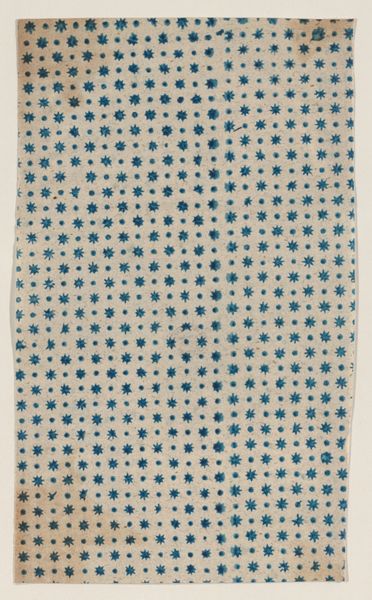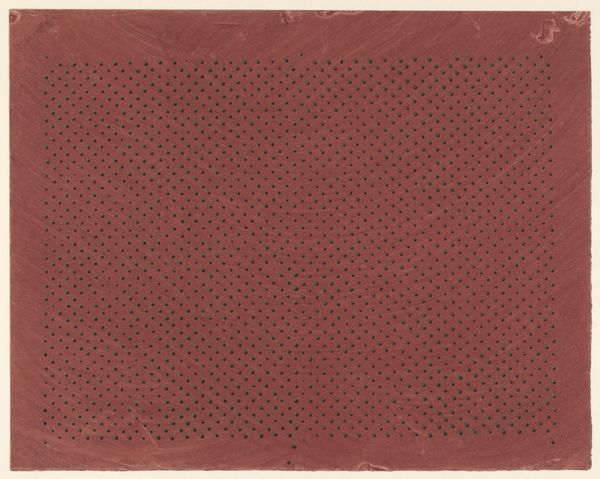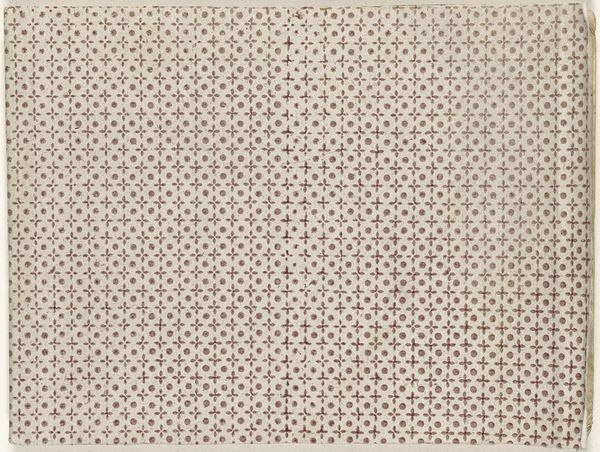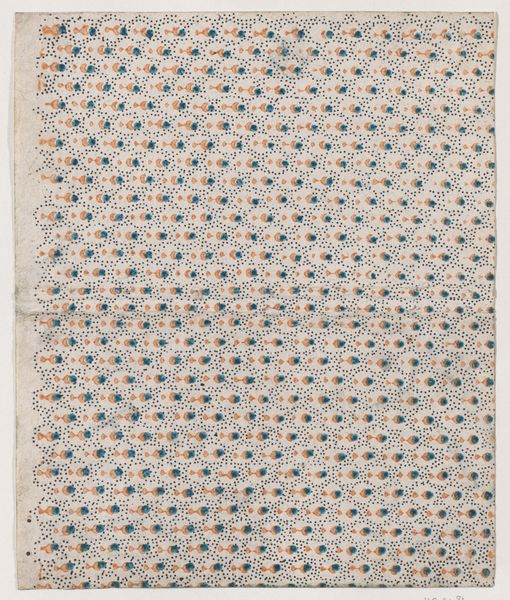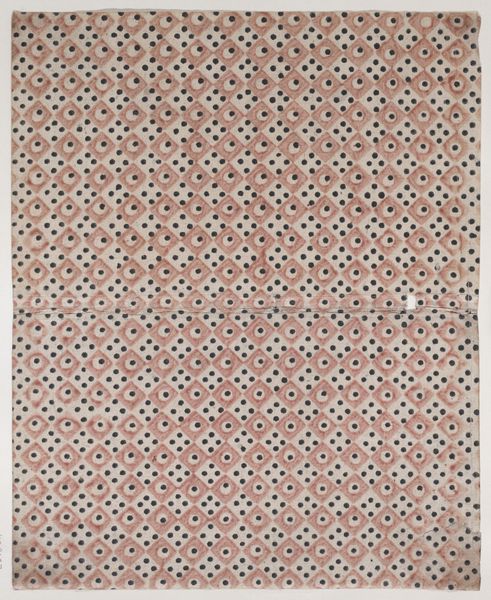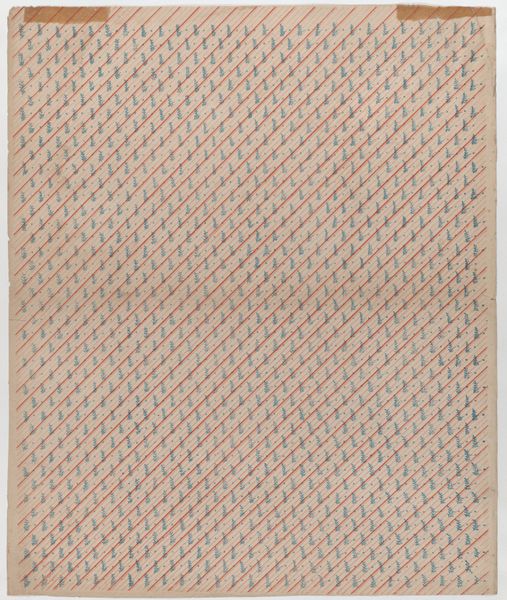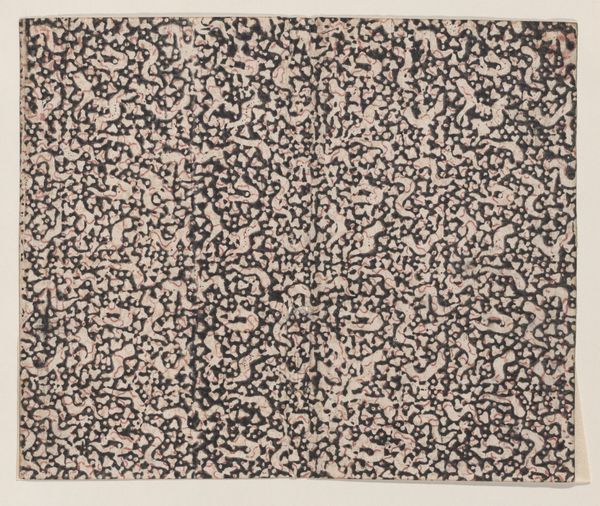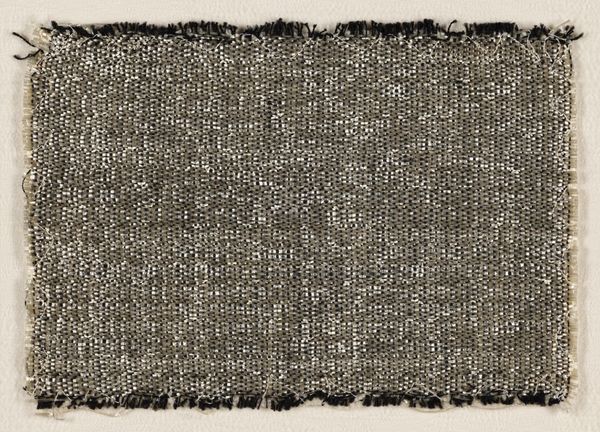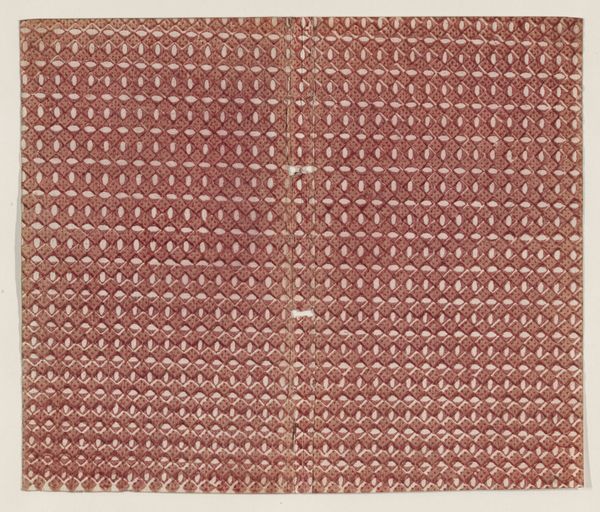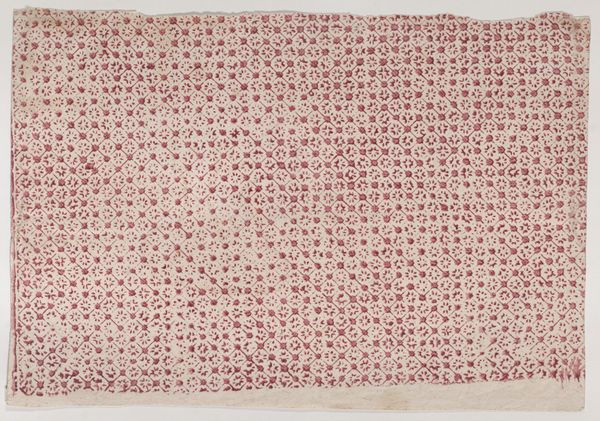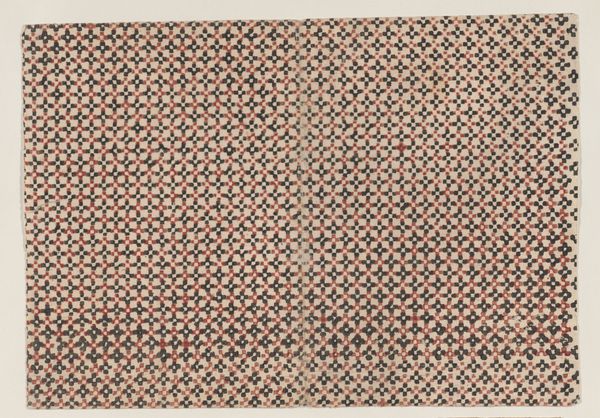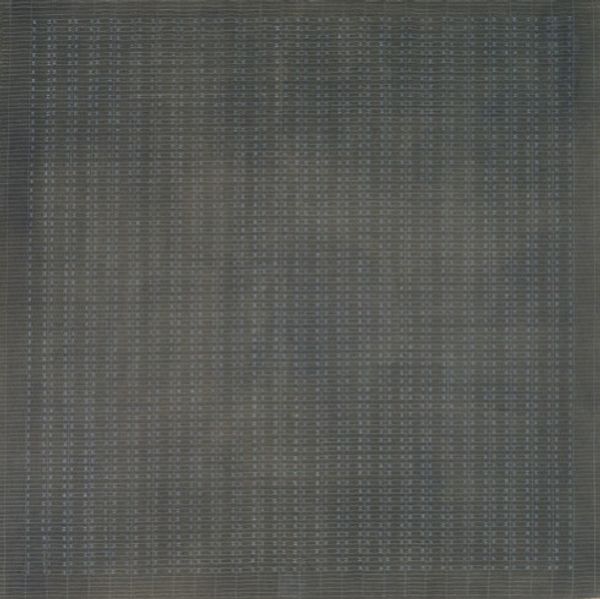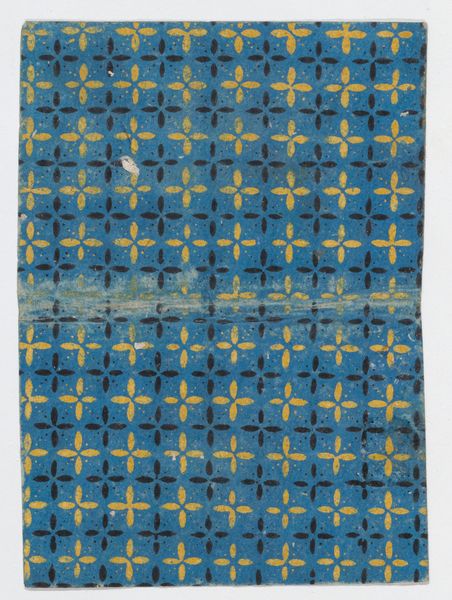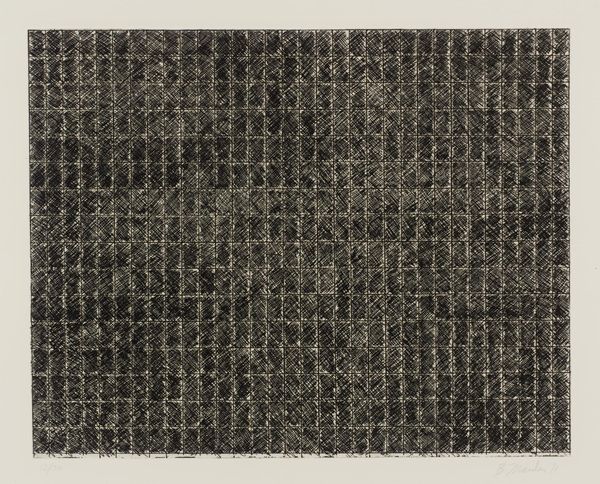
paper
#
printed
#
paper
#
geometric
#
repetition of pattern
Dimensions: height 403 mm, width 503 mm
Copyright: Rijks Museum: Open Domain
Editor: This is "Blad met patroon van vierkantjes", created sometime between 1861 and 1939, a print on paper by Stampi Remondiniani PESP. It’s a dense field of squares on what looks like blue paper. There is a hypnotic effect to the endless grid of tiny cubes. What underlying meaning or context might you see in such a repetitive pattern? Curator: Well, it speaks to me of the industrialization of art. We often consider "pattern and decoration" as a feminist art movement reacting against the male-dominated field of minimal art. It aimed to elevate traditionally feminine crafts. But this work precedes that movement. How does its creation in the late 19th century inform your interpretation? Editor: I see what you mean, the mechanical reproduction nods towards mass production... Maybe this print embodies anxieties about artistic labor becoming obsolete due to industrial advancements? Curator: Precisely. The rigid grid and identical squares, do they not recall the relentless monotony of factory work? What about the implied labor conditions? Consider, too, how printmaking democratized art, making images more accessible. Does that affect how you view the piece now? Editor: It's an interesting tension—accessible, yet speaking to a possibly dehumanizing process. It feels almost like a blueprint, regimented and precise, but hinting at something human being lost. Curator: It also questions authorship and the value of original art. What does originality even mean in the face of mechanical reproduction, especially back then, given its sociopolitical atmosphere? Is the artist the creator of the design or the technician who executes the print? Editor: I hadn't thought about it that way. It gives a whole new meaning to the artwork when thinking about how its mere creation sparked socio-political conversations! Thank you for enlightening me. Curator: And thank you. By acknowledging historical, social and economic conditions surrounding its production, we can unveil hidden nuances of the artwork.
Comments
No comments
Be the first to comment and join the conversation on the ultimate creative platform.
